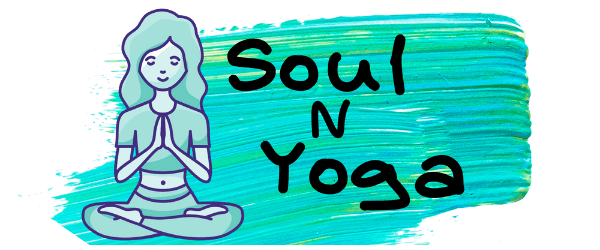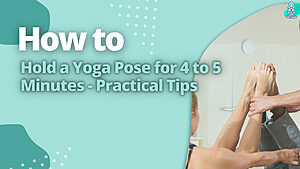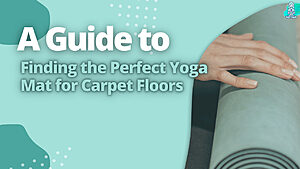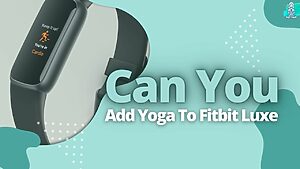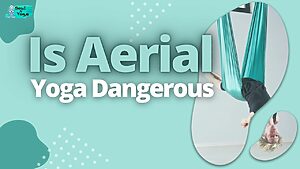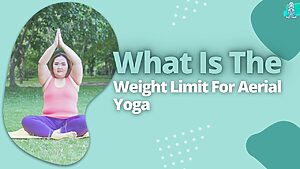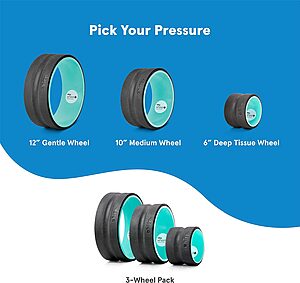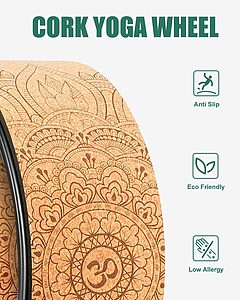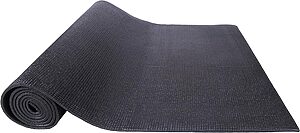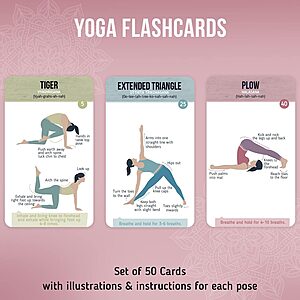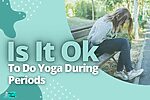You’ve undoubtedly attempted Yoga at some point and failed spectacularly if you’re anything like me. I’m not flexible, I can’t touch my toes, and I definitely can’t do crazy arm balances.
Trust me, and I’ve tried. So if you’re struggling with yoga poses, don’t worry – you’re not alone. Here is why you might not be able to do yoga poses and what you can do about it.
Key Takeaways
- Yoga is not about being able to do the most advanced or complicated poses.
- It is about connecting with your body and breathing and being present in the moment.
- If you can’t do a certain pose, that’s okay! There are always modifications or alternatives that can be made.
- The most crucial thing is to breathe and pay attention to your body.
- Remember that Yoga is a practice, and everyone has to start somewhere.
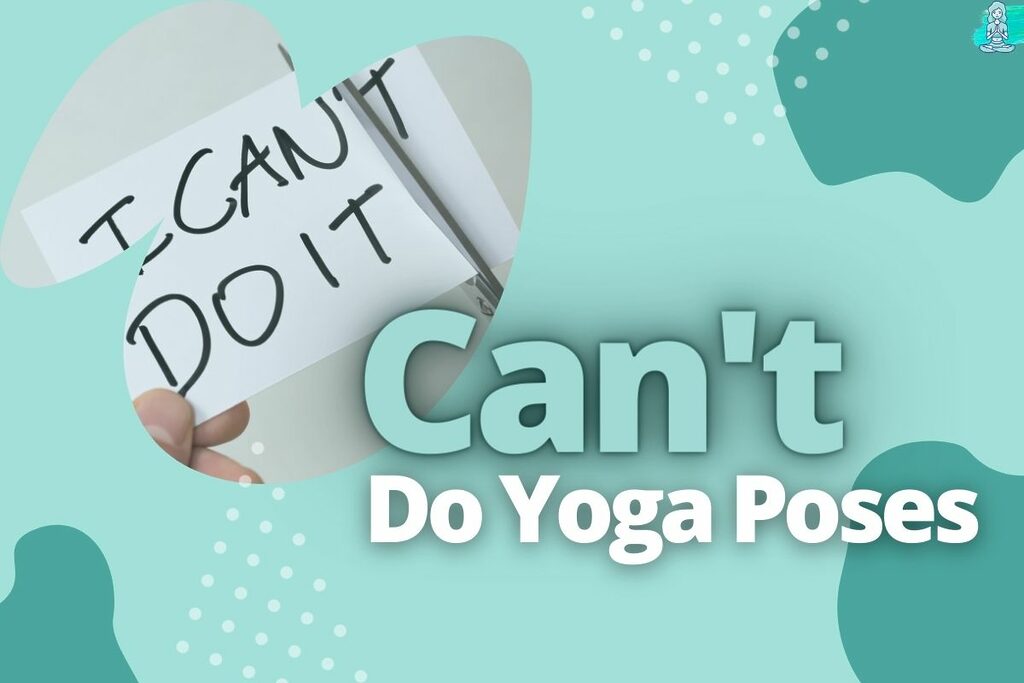
Here’s The Answer To Can’t Do Yoga Poses
You could think that, as a novice, you can’t do yoga poses. But that’s not true! Everyone has to start somewhere.
“Yoga is for everyBODY.” Yogis often use this phrase to remind people of the inclusivity of Yoga- that no matter your size, shape, age, or ability, there is a way for you to practice Yoga.
If you’re new to Yoga, some beginner poses are perfect for you. Plank is a great pose for beginners because it strengthens the spine and quads while lengthening the abdominal muscles.
Downward-facing dog is another beginner-friendly pose that helps to lengthen the spine and pelvis while strengthening the arms and legs.
So if you feel like you can’t do yoga poses, remember that everyone has to start somewhere! Plenty of beginner-friendly poses can help improve your posture and relieve back pain.
If You Can’t Do A Yoga Pose, It’s Okay
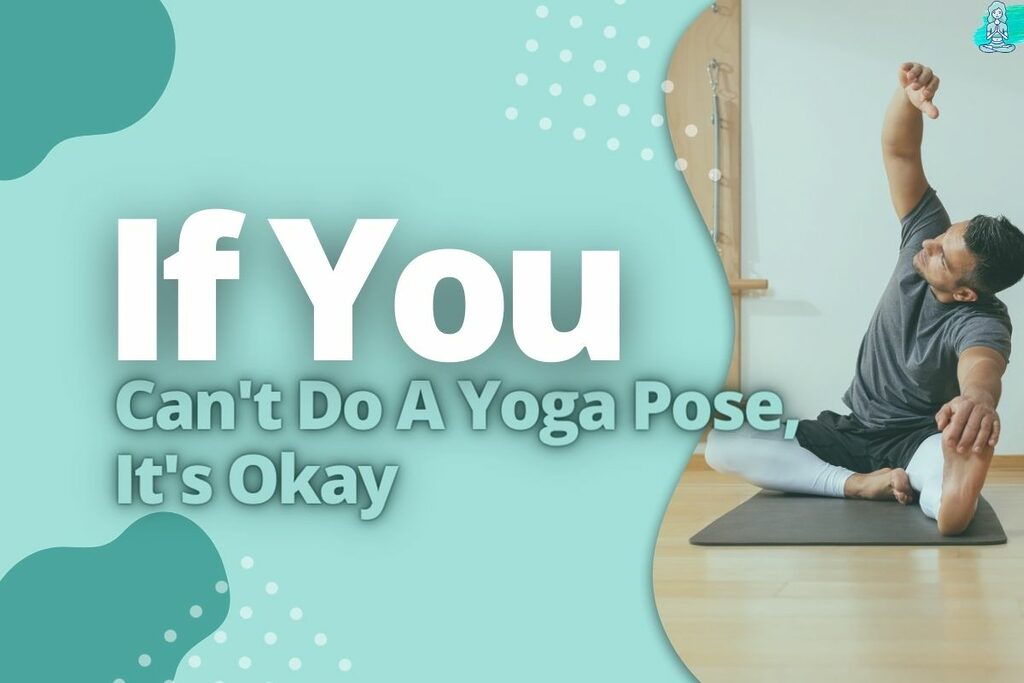
No matter how many times your yoga teacher tells you in class to “just try,” there are some poses that are just not going to happen for you if you don’t practice regularly and with consistency.
It’s not a reflection of your fitness level or body type but rather a simple matter of anatomy. If an aspect of the pose doesn’t feel right (like maybe it’s too intense or causes pain), then it’s important to pay attention and listen to what your body is telling you before pushing further into the pose.
If this frequently occurs enough (and it may not be), try talking with your teachers about how they would modify the posture slightly. So it better suits your needs without losing its original intention or integrity as asana practice.
And remember: You’re not alone. We all have our limitations when practising Yoga. It depends on which ones our bodies will allow us to overcome at any time.
Don’t Be Discouraged
Yoga is fantastic because there is always something to strive for, no matter how long you’ve been practising. That said, a few poses tend to give beginners the most trouble.
Here are a few challenging poses and some tips on how to make them more accessible:
Compression forward bends include poses like Janu Sirsasana (Head-to-Knee Pose) and Paschimottanasana (Seated Forward Bend). The problem with these poses is that they require a lot of mobility in the hips and hamstrings, which many people lack.
To make these poses more accessible, try placing a block under your sit bones in Janu Sirsasana and/or using a strap around your feet in Paschimottanasana. You can also try bending your knees slightly in both poses.
Balancing poses can be anything from Half Camel Pose (Ardha Ustrasana) to Eagle Pose (Garudasana). The challenge with balancing poses is that they require focus and concentration—two things that are often in short supply when you’re first starting.
To make balancing poses more accessible, start practising them near a wall or another support you can use for balance if needed. You can also try breaking the pose into smaller parts—for example, standing on one leg before adding the other in Eagle Pose.
Restorative Yoga: This type of Yoga is about relaxation and letting go, which can be hard to do when you’re still getting used to the practice. Try this simple breathing exercise if you feel tense or anxious in restorative yoga class.
Try Modified Versions Of The Pose
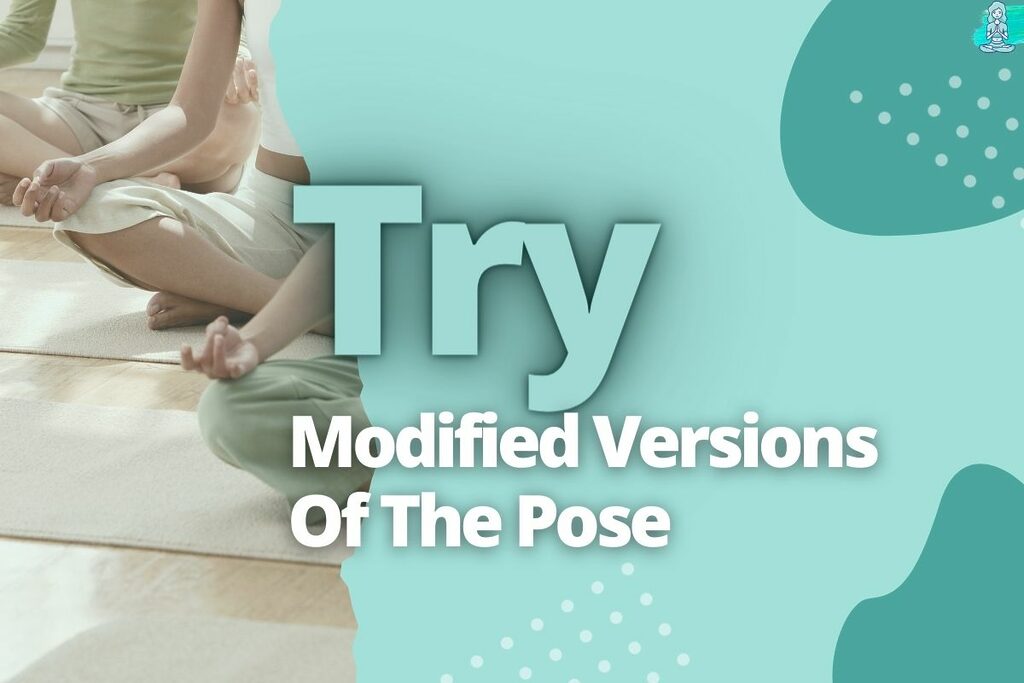
Modified versions of the pose can be helpful if you can’t do yoga poses.
You might not be able to do every yoga pose perfectly, but that’s okay! Modified versions of each pose can help you get the most out of your practice. If you can’t do a certain pose, try a modified version and see how it feels.
If you’re having problems with a certain pose, ask your yoga teacher for help. He or she may be able to suggest an easier option that still gives you the benefit of the pose.
So don’t worry if you can’t do all the poses perfectly—just keep practising and enjoy the benefits.
Use Props To Help You With The Pose
If you don’t know how to do a pose, try props. There are many ways to use props to help with your yoga practice.
- Props can help you get a better alignment. For instance, if you are in the Downward Dog position with your knees facing the sky and your hamstrings are tight, use blocks under the hands or feet to make it easier for you to find balance in this position without straining your lower back or hamstrings too much.
- Props can also give deeper access to a pose by allowing more space between joints and muscles than possible without them (the same principle as using blocks under hands/feet). This will allow for greater movement of joints within their normal ranges of motion while still being safe on the body overall!
- Finally, props can increase comfort during a movement by taking pressure off parts of our body where we might otherwise feel pain or discomfort—for example: when bending forward toward our toes in the Downward Dog position (a common problem area), placing blocks beneath each foot can take some strain off our wrists so that they don’t have to carry all our weight anymore. Just make sure not to set up too high.
Ask Your Teacher For Help
- Ask your teacher for help. Your yoga teacher is there to help you and can easily show you the proper form of basic poses, even if they seem difficult at first.
- Ask a friend who has been doing Yoga for a while. If none of your friends do Yoga, try asking someone in the class next to yours; they may be willing to offer some advice!
- Talk to your doctor if you are concerned about your health or want more information on how certain postures can benefit people with specific conditions.
- Use the internet for help. There are many great articles about how everyone can improve their physical well-being through practising Yoga regularly (and taking care not only during but after each session), so don’t hesitate to use this resource as well.
Don’t Compare Yourself To Others
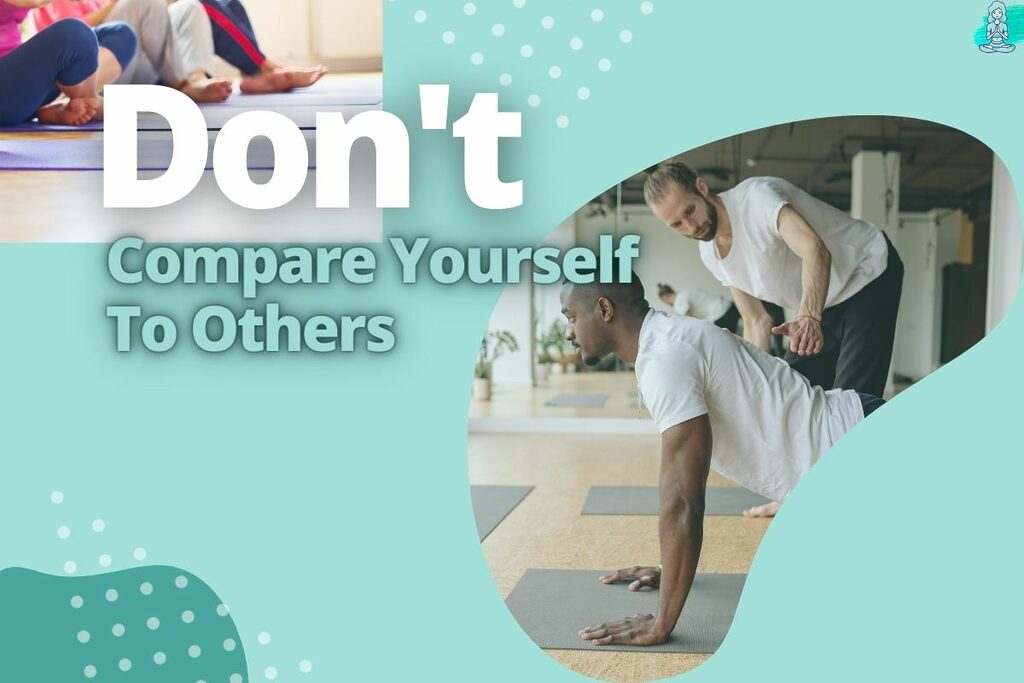
The next time you’re in a yoga class, try not to compare yourself to others. They may be able to do more advanced poses than you, but that doesn’t mean they have more experience than you.
They may have been practising Yoga every day for years, and you’ve only been doing it for a few months. If someone is doing something that seems impossible for you, don’t worry about it.
Their progress isn’t your problem—your progress is your problem! In order to accomplish the same goal as someone else, focus on achieving those things yourself, not on their achievements.
There’s nothing wrong with admiring what others can do; just don’t let it discourage or demotivate you from working towards your chosen goal.
How To Improve Flexibility For Yoga Poses?
- Stretching: The best way to improve flexibility for Yoga poses is stretching, which involves moving and holding one or more body parts to increase the range of motion. This can be done through static stretching, dynamic stretching and proprioceptive neuromuscular facilitation (PNF).
- Breathing: Breathing techniques can help you relax during stretches, improving your overall flexibility in Yoga poses. Deep breathing positively affects stress levels by reducing cortisol levels while increasing endorphins—our natural “feel-good” hormones—in our bodies.
- Meditation: Another helpful way to relax while practising Yoga is meditation. It helps you focus on breathing more deeply and clearing your mind of distractions so that you can better concentrate on the stretch being performed at hand. This will also improve concentration when it comes to actual Yoga poses.
What Are The Most Common Mistakes People Make When Doing Yoga Poses?
- Don’t overstretch. If you’re trying to do a pose that’s too advanced for you, don’t force yourself into it by pushing too hard. You’ll just end up hurting yourself and feeling frustrated; this will take away from your practice and make it less enjoyable than it could be.
- Don’t hold your breath. At the same time, don’t hold your breath while doing Yoga poses either—this can cause light-headedness or even dizziness in some cases, which is not ideal when you’re trying to get into the zone with Yoga.
- Don’t try to do a pose that’s beyond your ability level (and/or experience). It’s tempting sometimes to want to push ourselves beyond what we think we’re capable of doing. But this can be counterproductive when working on our flexibility or learning how far our muscles can go before becoming sore or injured. In reality, all those extra stretches will only serve as an obstacle later down the road because now we know exactly where those boundaries lie.
How To Correct Alignment In Yoga Poses?
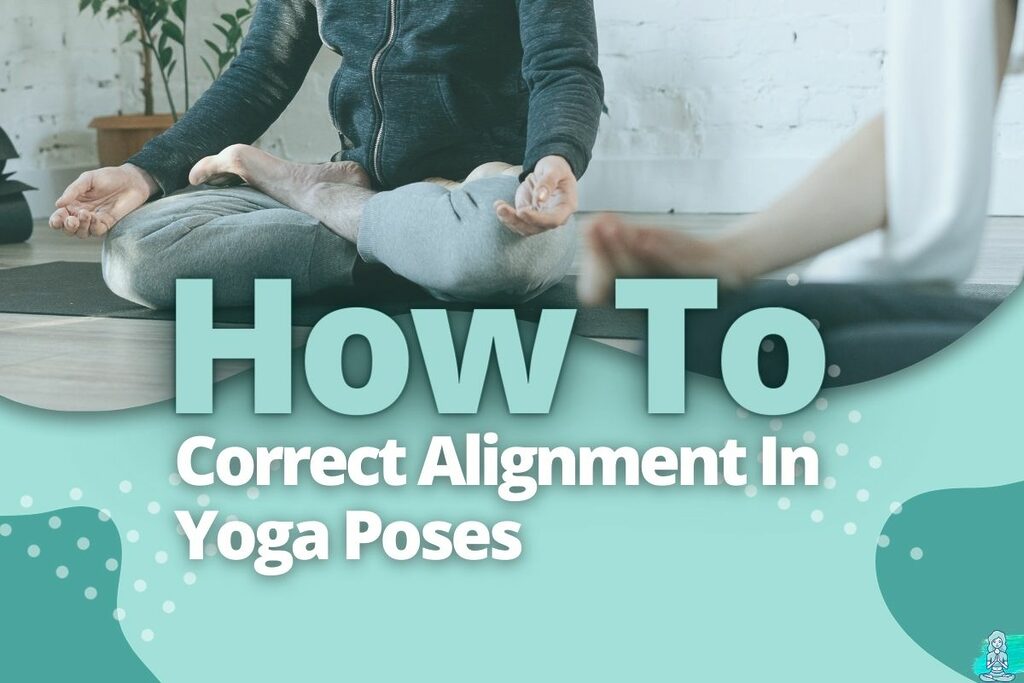
If you find the alignment difficult, remember to focus on your posture. Yoga is about learning to find your natural body shape and maintain it over time. This is where props are so helpful.
They can help you get into a position that might otherwise be impossible until you have more practice in the pose. If you can’t do it, try a modified version of the pose (for example, take your feet wider apart or closer together).
Ask your teacher for help if they know how to modify it further and are comfortable doing so in front of others (some teachers don’t offer modifications because they don’t want students comparing themselves).
What To Focus On When Doing Yoga Poses?
There are many things to focus on when doing yoga poses.
- Focus on your breathing. Focus on how the air feels as it enters and leaves your body when you inhale and exhale through your nose. This will help you relax more easily, which is essential because it makes it easier for you to hold a pose for longer.
- Focus on your body, not the poses themselves. By focusing too much on how far apart or close together two parts of our bodies should be from each other, we often lose track of our actual form, which can lead us astray from proper alignment and make us feel like we’re doing something wrong when that isn’t necessarily true. Instead, learn how each part feels as it moves into place so that when you’re moving into a pose (or attempting one).
- Focus on the present moment rather than thinking ahead or back; this helps avoid unnecessary stressing over things that haven’t happened yet but could still happen later today (eek!). Let go of regrets about past mistakes made during class, too, because these lessons have already been learned—even if others don’t know what went wrong yet.
Conclusion
If you can’t do yoga poses, don’t worry! You can also do a lot of other things to enhance your practice. Just keep trying and be persistent.
Remember, the key to success is not to give up. So keep at it, and eventually, you’ll be able to do those yoga poses. Enjoy the journey and the additional advantages that Yoga provides in the interim.
Check out our other articles for more tips on improving your yoga practice. And don’t forget to follow us on social media for updates on new articles and helpful tips.
Frequently Asked Questions
What should I do if I can’t do a yoga pose?
There are many different yoga poses; not everyone can do them the same way. The key is to focus on your body, not the pose itself. By focusing on your form and how each part of your body feels about the others, you’ll be able to do more difficult poses easily.
How can I improve my flexibility to be able to do Yoga poses?
Experts recommend practising gentle stretching and flexibility exercises daily. Being more flexible allows you to perform various yoga poses, like the lotus, fire hydrant or bow pose.
Is it normal not to be able to do some yoga poses?
Yes, it is common not to be able to do some yoga poses. However, this doesn’t mean you can’t practice Yoga or that your practice isn’t effective. Instead of focusing on the poses you can’t do, focus on the poses you can do and how they can help improve your flexibility and overall yoga practice.
Why do certain yoga poses seem so difficult to me?
The most common reasons that people find a yoga pose challenging are a Difficulty with the physical movements of a pose. When holding a particular position for an extended period, like during a 30-second chair pose, your muscles fatigue, and you have to force yourself to keep from falling out of it.
- How to Hold a Yoga Pose for 4 to 5 Minutes – Practical Tips
- A Guide to Finding the Perfect Yoga Mat for Carpet Floors
- Can You Add Yoga To Fitbit Luxe (Unlock the Power)
- Can You Add Yoga To Garmin Vivoactive (Yoga On The Go)
- Is Aerial Yoga Dangerous (The Scary Truth)
- What Is The Weight Limit For Aerial Yoga (Exploring The Possibilities)
